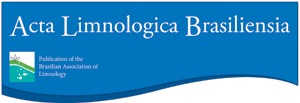|
Asplanchnidae
|
|
Asplanchna sp (Gosse, 1850) |
Asplanchna priodonta (Gosse, 1850) |
|
Bdelloida
|
|
Bdelloidea sp (Hudson, 1884) |
|
|
Brachionidae
|
|
Brachionus havanaensis (Rousselet, 1911) |
Plationus patulus macracanthus (Daday, 1786) |
|
Brachionus quadridentatus (Hermann, 1783) |
Platyias quadricornis (Ehrenberg, 1832) |
|
Brachionus falcatus (Zacharias, 1898) |
Keratella americana (Carlin, 1943) |
|
Brachionus sp (Pallas, 1766) |
Keratella cochlearis (Gosse, 1851) |
|
Plationus patuluspatulus (Müller, 1786) |
Keratella tropica (Apstein, 1907) |
|
Dicranophoridae
|
|
Dicranophorus sp (Nitzsch, 1827) |
Dicranophorus claviger (Hauer, 1965) |
|
Euchlanidae
|
|
Dipleuchlanis sp (Beauchamp, 1910) |
Euchlanis dilatata (Ehrenberg, 1832) |
|
Dipleuchlanis propatula (Gosse, 1886) |
Euchlanis incisa (Carlin, 1939) |
|
Euchlanis sp (Ehrenberg, 1832) |
|
|
Lecanidae
|
|
Lecane papuana (Murray, 1913) |
Lecane ludwigii (Eckstein 1883) |
|
Lecane luna (Müller, 1776) |
Lecane bulla (Gosse, 1851) |
|
Lecane lunaris (Ehrenberg, 1832) |
Lecane sola (Hauer, 1936) |
|
Lecane robertsonae (Segers, 1993) |
Lecane tabida (Harring & Myers, 1926)
|
|
Lecane cornuta (Müller, 1786)
|
Lecane stenroosi (Meissner, 1908) |
|
Lecane curvicornis (Murray, 1913) |
Lecane sp (Remane, 1933) |
|
Lecane hamata (Stokes, 1896) |
Lecane pyriformis (Daday, 1905) |
|
Lecane clasterocerca (Schmarda, 1859) |
Lecane quadridentata (Ehrenberg, 1830) |
|
Lecane signifera (Jennings, 1893) |
Lecane thalera (Harring & Myers, 1926) |
|
Lecane thienemane (Hauer, 1938) |
Lecane furcata (Murray, 1913) |
|
Lecane leontina (Turner, 1892) |
Lecane asymetrica (Murray, 1913) |
|
Lepadellidae
|
|
Colurella obtusa (Gosse, 1886) |
Lepadela acuminata acuminata (Ehrenberg, 1834) |
|
Lepadella sp (Bory de St.Vincent, 1826) |
Lepadella benjamini benjamini (Harring, 1916) |
|
Lepadela obtusa (Wang, 1961) |
Lepadella dactyliseta (Stenroos, 1898) |
|
Lepadella patella (Müller, 1773) |
Lepadella bejamini brasilienses (Koste, 1972) |
|
Lepadella ovalis (Müller, 1786) |
Squatinella sp (Bory de St.Vincent, 1826) |
|
Mytilinidae
|
|
Mytilina ventralis (Ehrenberg, 1830) |
Mytilina mucronata (Müller, 1773) |
|
Scaridiidae
|
|
Scaridium sp (Ehrenberg, 1830) |
Scaridium longicaudum (Müller, 1786) |
|
Synchaetidae
|
|
Polyarthra dolichoptera (Idelson, 1925) |
|
|
Testudinellidae
|
|
Testudinella patina (Hermann, 1783) |
Testudinella mucronata (Gosse, 1886) |
|
Trichocercidae
|
|
Trichocerca sp (Lamarck, 1801) |
|
|
CLADOCERA
|
|
Chydoridae
|
|
Anthalona neotropica (Elmoor-Loureiro & Debastiani-Júnior, 2015) |
Flavalona iheringula (Kotov & Sinev, 2004) |
|
Anthalona sp (Van Damme, Sinev & Dumont, 2011) |
Flavalona margipluma (Sousa, Santos, Güntzel, Diniz, Melo Junior & Elmoor-Loureiro, 2015). |
|
Chydorus nitidulus (Sars, 1901) |
Karualona muelleri (Richard, 1897) |
|
Chydorus eurinotus (Sars, 1901) |
Magnospina dentifera (Sars, 1901) |
|
Dunhevedia odontoplax (Sars, 1901) |
Nicsmirnovius paggii (Sousa & Elmoor-Loureiro, 2017) |
|
Daphniidae
|
|
Ceriodaphnia cornuta (Sars, 1885) |
|
|
Ilyocryptidae
|
|
Ilyocryptus sordidus (Liévin, 1848) |
|
|
Macrothricidae
|
|
Macrothrix squamosa (Sars, 1900) |
Macrothrix laticornis (Jurine, 1820) |
|
Macrothrix triserialis (Brady, 1886) |
|
|
Moinidae
|
|
Moina minuta (Hansen, 1899) |
|
|
Sididae
|
|
Diaphanosoma birgei (Korínek, 1981) |
|
|
COPEPODA
|
|
Cyclopidae
|
|
Eucyclops n. neumani (Pesta, 1927) |
Microcyclops ceibaensis (Marsh, 1919) |
|
Ectocyclops bromelicola (Kiefer, 1935) |
Microcyclops finitimus (Dussart, 1984) |
|
Ectocyclops rubescens (Brady, 1904) |
Thermocyclops decipiens (Kiefer, 1929) |
|
Mesocyclops ellipticus (Kiefer, 1936) |
Paracyclops andinus (Kiefer, 1957) |
|
Mesocyclops meridianus (Kiefer, 1926) |
Tropocyclops prasinus (Fischer, 1860) |
|
Microcyclops alius (Kiefer, 1935) |
Paracyclops fimbriatus (Fischer, 1853) |
|
Harpacticoida
|
|
Harparticoida (Sars, 1903) |
|

 Effects of urban pollution on zooplankton diversity along the Almada River (Bahia, Brazil)
Effects of urban pollution on zooplankton diversity along the Almada River (Bahia, Brazil) Thumbnail
Thumbnail
 Thumbnail
Thumbnail
 Thumbnail
Thumbnail


